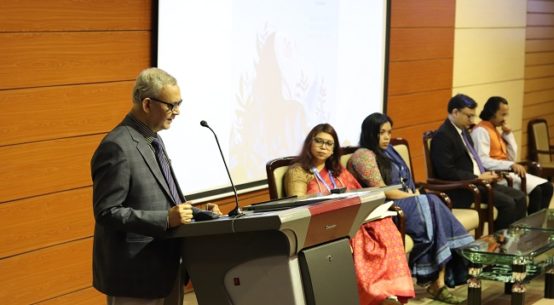
Bangladeshis working abroad areexpected to send huge money back home over the next three fiscal years helping the country’s foreign currency reserve to hit USD 53.99 billion by the middle of 2023-24 fiscal year.
The government projects over a 12 percent increase on average in the inflow of remittance, the key drivers of the country’s more than $409 billion economy, over the next three fiscal years, including the current one.
According to a Finance Ministry document obtained by UNB, the remittance inflow of 2019-20, 2020-21 and 2021-22 was 11.2 percent and 36 percent while the target for the current 2021-22 fiscal is 15 percent with a projection of 12 percent and 10 percent for 2022-23 and 2023-24 fiscals respectively.
The document reveals that the foreign exchange reserve was USD 36.04 billion and USD 44 billion in 2019-20 fiscal and 2020-21 fiscal respectively while the target for the current 2021-22 fiscal is USD 48.37 billion with projection of having USD 50.74 billion and USD 53.99 billion for 2022-23 fiscal and 2023-24 fiscal respectively.
For a developing and emerging economy, the role of foreign remittances has always been crucial. In the context of Bangladesh, foreign remittances are expected to help reduce the current account deficit and augment GDP growth by stimulating domestic demands, the document says.
On the other hand, it says, the micro-level context shows that remittance inflows affect the lifestyle of the household as well as increase the saving level that can serve as an important source of capital.
The document mentions that the government has taken several initiatives to increase remittance inflows as well as foreign employment.
The initiatives include providing cash incentives for sending remittances through banking channels, simplification of remittance-related rules and regulations, reduction in administrative costs for sending remittances through financial institutions and exploration of new market sources for manpower export.
The official remittance inflows began going up in the 2020-21 fiscal despite global and domestic impacts of the Covid-19 pandemic. The total inflow of foreign remittances during the 2020-21 fiscal was $24.77 billion which is 36 percent higher than the same period of the previous fiscal year.
According to the document, the current account deficit widened in the 2019-20 fiscal due to weak exports before moving into surplus in the 2020-21 fiscal, supported by a surge in official remittance inflows.
The current account surplus reached USD 1.6 billion at the end of February 2021, which had a deficit of USD 2.1 billion during the same period of the previous year.
During the period, the capital and financial accounts remained positive with USD 0.61 billion net FDI, and hence overall balance was positive.
However, as per the document, the gross foreign exchange reserve grew to a record growth supported by a continued surge in official remittance and budget support received from various agencies.
The reserve is equivalent to meet the import bill of around 10 months. The nominal Taka/US dollar exchange rate remained stable in the last fiscal.
The depreciation of the Taka against the US dollar is likely to impact both the export earnings and remittance inflows positively.
Effective demand management by the Bangladesh Bank and positive projections in the external sector will keep the exchange rate competitive on the external front, the document says.
To achieve an accelerated GDP growth, the document says, the higher level of public and private investment is essential, which eventually requires a higher amount of imports.
In the medium term, Bangladesh is implementing mega infrastructure projects to accomplish higher GDP growth which requires strong foreign reserves. As a result, the current account will certainly accrue some deficit.
However, the official document mentioned, positive capital and financial account extended ODA and FDI is expected to mitigate the adverse effects. The optimal use of project aid in the pipeline, foreign investment in economic zones and inflow of external credit in the private sector may lead to the accumulation of adequate surplus in financial and capital accounts.
The government has received budget support of around USD 3 billion in 2019-20 fiscal and 2020-21 fiscal from various development partners and expects to receive further USD 2.4 billion as budget and vaccine support.
As a result, the official document points out, the overall balance will remain favourable with the uptrend of foreign exchange reserves. Considering everything, the medium-term current account deficit is expected to remain negative.
The document also mentioned that the foreign exchange reserve is expected to stretch to USD 53.3 billion in the medium term.

